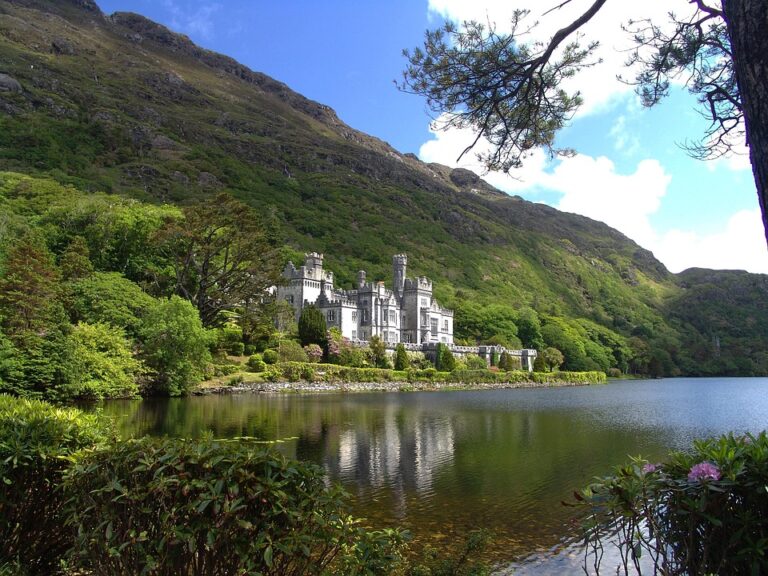Eternal Echoes: The Role of Historical Landmarks in Storytelling and Culture
Historical landmarks serve not only as a connection to our past but also as vibrant threads in the rich tapestry of storytelling and culture. From massive stone structures to quaint homes, these locations embody narratives that shape our collective identity and inspire future generations. In this article, we’ll explore the multifaceted role that historical destinations play in storytelling and their ongoing significance in our cultural landscape.
H1: The Importance of Historical Destinations
Historical destinations are key players in the realm of storytelling. They provide a backdrop against which countless narratives unfold, offering depth and context that enrich our understanding of history. These sites attract millions, with a staggering 1.5 billion international tourist arrivals reported in 2019 alone, according to the United Nations World Tourism Organization. This statistic highlights the immense popularity and economic importance of historical landmarks.
H2: Storytelling Through Architecture
Every historical destination tells a story through its architecture. The intricate designs and unique features are often reflective of the culture and era in which they were built. Take, for instance, the grandeur of the Colosseum in Rome. This iconic structure embodies the Roman Empire’s ambition and spirit, inviting visitors to imagine gladiators’ fierce battles and public spectacles that once mesmerized crowds.
Analogy: Just as a book is filled with characters and plots that resonate with readers, historical landmarks are like open volumes of history, inviting exploration and reflection.
H3: Cultural Significance of Historical Landmarks
Beyond their aesthetic appeal, historical destinations often embody cultural significance. They remind us of our roots and nurture community identities. For instance, Machu Picchu not only showcases the innovative engineering skills of the Inca civilization but is also a symbol of pride and resilience for the Peruvian people. Such landmarks can evoke national identity and unity among citizens, persisting as pivotal points for local culture.
H2: How Historical Destinations Influence Modern Narratives
In recent years, there has been a notable shift toward including historical destinations in modern narratives, particularly in literature and film. Cultural tourism has experienced a 20% annual growth, with travelers increasingly seeking connections to their heritage. This trend underscores the integration of historical landmarks in contemporary storytelling mediums, making past narratives relevant to today’s audiences.
H3: Media Representations and Their Impact
Films and literature often draw from historical destinations to create compelling narratives that resonate with viewers and readers. For example, movies such as The Da Vinci Code, which feature historical landmarks like the Louvre Museum, not only bring these sites to the forefront of global consciousness but also influence tourism by increasing visitor numbers. After the film’s release, the Louvre reported a significant uptick in attendance, indicating that storytelling can dramatically impact real-world engagement with historical destinations.
H2: The Legacy of Historical Landmarks
As custodians of stories, historical landmarks are crucial in preserving cultural heritage. They educate future generations about their history and provide tangible connections to the past. Various organizations work tirelessly to maintain and promote these sites, ensuring that their stories endure despite the ever-changing cultural landscape.
H3: Challenges Faced by Historical Destinations
Despite their importance, many historical destinations are facing challenges, including climate change, over-tourism, and neglect. For instance, rising sea levels threaten coastal landmarks, while overcrowded sites dilute the visitor experience. The UNESCO World Heritage Centre continues to stress the need for sustainable tourism initiatives to safeguard these irreplaceable sites for years to come.
H1: Conclusion: Embracing the Past for a Brighter Future
Historical destinations are more than just remnants of the past; they are living narratives that shape our culture and influence storytelling across various mediums. As we move forward, it is essential to honor and preserve these sites, ensuring that their stories continue to resonate and inspire future generations.
Exploring the intricate connections between historical landmarks, storytelling, and culture allows us to appreciate the profound impact these destinations have on our lives. For more insights, check out related articles on Buzzo.live:
External Links for Further Reading
With a keen focus on preserving meaningful connections to our past, each visit to a historical destination is a step toward personal and collective understanding, echoing the enduring stories that define our culture.
Images Suggested:
-
Image of the Colosseum
- Alt Text: "Historical destination: Colosseum in Rome"
- Image of Machu Picchu
- Alt Text: "Historical destination: Machu Picchu, a symbol of Inca heritage"
By integrating essential elements of SEO and providing valuable content, this article serves as a resource that both engages readers and enhances visibility on search engines.


